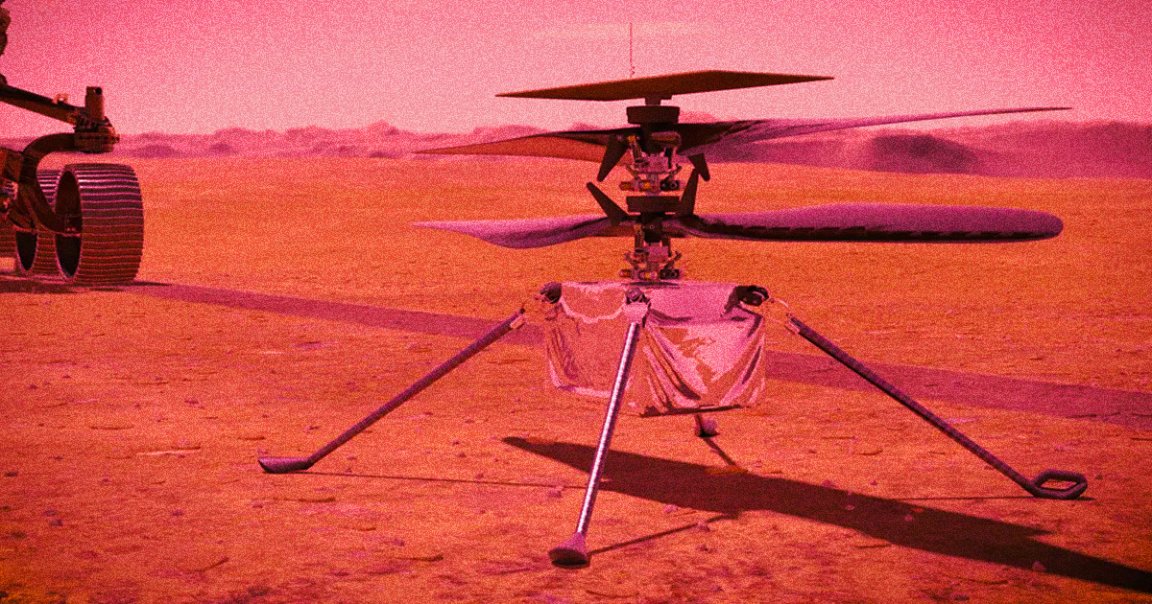
The Wiggles
Its mission might be over, but it’s not dead just yet!
Last week, NASA tragically revealed that its beloved Mars helicopter, Ingenuity, had sustained too much damage to its rotor blades to continue its mission — bringing the brave chopper’s groundbreaking Martian journey to an end.
But while the four-legged helicopter may no longer be able to take flight, NASA does have one more task for its scrappy aircraft: twitching around a little.
Yes, really. According to Space.com, in a livestream on Thursday, NASA Jet Propulsion Laboratory (JPL) scientist and Ingenuity team leader Teddy Tzanetos noted that he and his team are planning to rotate and “wiggle” Ingenuity’s wings a bit over the next few days. Though Ingenuity’s damage is evident, NASA still isn’t clear on what exactly happened to the chopper, nor how extensive the destruction is. Thus, in its final days, Ingenuity is tasked with taking videos as it wiggles and twirls about in a last-ditch effort to help NASA understand as much about its demise as possible.
Ingenuity Forever
Even in its death, Ingenuity — the first humanmade craft to execute a controlled flight on another planet — is the gift that keeps giving. When it first landed on Earth’s dusty red neighbor back in 2021, Ingenuity was expected to complete just five flights. It far surpassed expectations, going aloft on an incredible 72 occasions.
“The NASA JPL team didn’t just demonstrate the technology,” NASA’s Mars Exploration Program Deputy Director Tiffany Morgan said during the livestream, according to Space.com, “they demonstrated an approach that if we use in the future will really help us to explore other planets and be as awe-inspiring, as amazing, as Ingenuity has been.”
Beyond its more personal achievements, Ingenuity also proved to be a terrific partner for NASA’s still-kicking Mars rover Perseverance. As the rover rolled around on the dusty red planet below, Ingenuity was able to provide aerial support, scouting the Martian surface for interesting features and potential dangers. As Morgan reportedly added in the livestream, this “allowed the planners to navigate the terrain as well as to identify potentially compelling science targets.”
But while Ingenuity’s work might be done, its legacy will surely live on.
“I really look forward to the future,” said Morgan, according to Space.com, “and what we can do with the offspring of Ingenuity.”
“We couldn’t be prouder or happier with how our little baby has done,” added Tzanetos. “It’s been the mission of a lifetime for all of us.”
More on Ingenuity: NASA’s Mars Helicopter Has Died